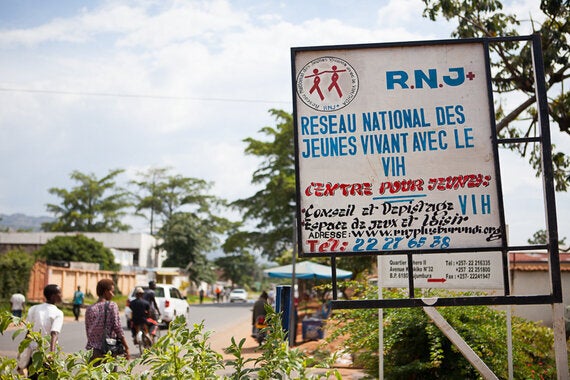There are an estimated 2.1million adolescents living with HIV, with more than 80% of them living in sub-Saharan Africa. Many don't know their HIV status. As we get set to mark World AIDS Day on Monday, that's a sobering reminder for all of us working within the sector that we still face challenges that need new solutions when combating an epidemic that has been around for 30 years.
Adolescence is a time of rapid change, a period of exploration and increased risk taking, and young people may as a result be less able to negotiate for safer sex and be more vulnerable to exploitation and abuse. A large number of children infected in infancy are surviving into adolescence even without antiretroviral therapy (ART). Yet adolescents are less likely to test for HIV and those that do and access treatment often need more support to stay in care and adhere to HIV regimens. It's also very difficult to move from being a child and accessing paediatric care with high levels of support to being a young adult and accessing adult care services where they become responsible for their own care, and many adolescents are lost in the transition process.

This youth-led centre in Bujumbura, Burundi, offers a safe space for young people living with and most at risk of HIV
Adolescent health, and in particular adolescent health and HIV, continues to be a gap in global health efforts. We're living at a time when there are more adolescents in the world than ever before in human history according to a recent United Nations Population Fund's State of World Population 2014 report, with the majority concentrated in the global south. The needs of adolescents and young people cannot be ignored any longer.
Many of us are working hard to provide the right kind of support to young people. But it's not enough. We need a larger global response from governments, international agencies and donors. We need funding for research, prevention, treatment and care aimed specifically at young people and adolescents. If we are to reach the young people who are most at risk of HIV, we need to be able to differentiate between ages and genders and provide interventions that respond appropriately to the specific risks they face.

Community organisations run by and with young people are crucial in helping to provide tailored services that suit individual needs
Adolescents living with HIV must have the treatment, quality care, support and access to the social safety nets they need to survive and thrive. When young people are able to find services, many report being poorly treated, discriminated against and sometimes refused services.
We need to be able to work within the varied legal systems and different restrictions that exist in developing countries such as the criminalization of sex work and drugs, and increase the access of young people to services and prevention that protect them from sexually transmitted infections, HIV and unplanned pregnancy.
We need specialized workers who can reach young people on issues such as drug use, sexual behaviour, gender identity and sexuality. HIV prevention, treatment and care and sexual and reproductive health services are important entry points for this, and we need to use and improve these services to their fullest.
We need more research and data around the needs of adolescents and the current barriers to the provision of services faced by those most at risk in order to develop tailored programmes with them. And we need to ensure the meaningful involvement of adolescents and young people living with HIV in the design, implementation and monitoring of youth-friendly HIV and sexual and reproductive health services.
Above all we need to get much much better at involving young people in decisions and choices about their own health to give them every chance possible to lead healthy, productive and fulfilled lives.
To mark World AIDS Day, the Alliance has launched a new online game - Cell Survivor - to raise awareness of some of the issues facing adolescents living with HIV in the global south, such as not having access to antiretroviral treatment or condoms.